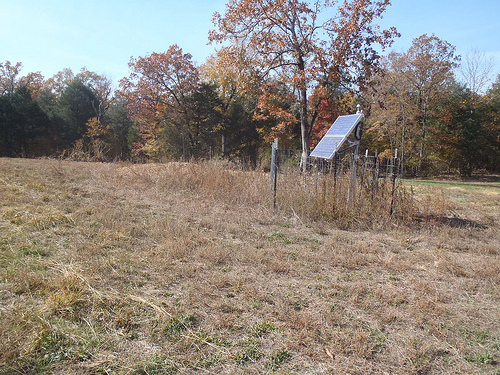W39A
Magazine, AR, USA
The USArray component of the NSF-funded EarthScope project ended its observational period in September 2021 and all remaining close-out tasks concluded in March 2022. Hundreds of seismic stations were transferred to other operators and continue to collect scientific observations. This USArray.org website is now in an archival state and will no longer be updated. To learn more about this project and the science it continues to enable, please view publications here: http://usarray.org/researchers/pubs and citations of the Transportable Array network DOI 10.7914/SN/TA.
To further advance geophysics support for the geophysics community, UNAVCO and IRIS are merging. The merged organization will be called EarthScope Consortium. As our science becomes more convergent, there is benefit to examining how we can support research and education as a single organization to conduct and advance cutting-edge geophysics. See our Joining Forces website for more information. The site earthscope.org will soon host the new EarthScope Consortium website.




Principal Investigators and Institutions:
Simon Klemperer, Stanford University
Elizabeth Miller, Stanford University
Funding Source:
NSF EarthScope
Field Dates:
6/2010 – 12/2012
Equipment Used:
50 Broadband Stations
50 Q330s/rt130 Data Loggers
Data Status:
Archived 1-5 Service
Network Code:
YX
Description:
The most highly-extended regions of continental crust, known as core-complexes, and their bounding structures, typically mapped as low-angle faults even though these defy predictions of the mechanical behavior of the crust, are among the most controversial aspects of continental extension. These features have defied easy explanation because scientists have lacked clear images of their deep underpinnings. Earthscope's FlexArray is allowing a new generation of imaging procedures. Traditionally, seismologists studying the lithosphere have been restricted by limitations on available equipment to deploying single lines of receivers, allowing imaging of two-dimensional cross-sections through the crust. Earthscope's FlexArray finally provides enough instrumentation that a two-dimensional array at the surface can be deployed, allowing reconstruction of a three-dimensional (3D) image volume at depth.
The Basin-and-Range Province in Nevada offers unparalleled exposure of diverse styles of extension, including the metamorphic core complexes that juxtapose ductilely deformed mid-crustal rocks with unmetamorphosed, brittly-deformed supracrustal rocks. This relationship implies significant horizontal extension, compensated at the scale of the whole crust either by large-magnitude simple shear or significant lateral and vertical flow of the lower crust. Elucidating the relationship between simultaneous deformation of the upper and lower crust requires geophysical data of sufficient resolution to convincingly show how the surface geology is linked to - or disconnected from - features at depth. Uncertainty in the total stretching involved is a major unknown in tectonic reconstruction of extensional provinces wherever such core complexes occur around the world.
The National Science Foundation's Earthscope Science program is teaming with the Petroleum Research Fund of the American Chemical Society to sponsor a 3D study of the classic Ruby Mountain Metamorphic Core Complex and its adjacent basins (Lamoille-Huntington Valley & Ruby Valley) to look for evidence of crustal flow into the metamorphic core. This region is being targeted because the existing data that surround the Ruby Mountains allow detailed interpretation of the new geophysical results in a larger 3D volume. The detailed FlexArray geophysical studies of the crust and upper mantle, using a 40-station array of passive, broadband seismometers, will provide an important link between Transportable Array data and surface geologic data to develop understanding of continental structure, deformation and evolution, and the lithospheric-scale processes involved in extensional orogens. Established passive-recording techniques (ambient-noise tomography, receiver-function velocity inversions, common-conversion point imaging, crustal anisotropy analyses) are being applied in 3D instead of the more commonplace two dimensions, and at a higher resolution (5-km spacing) than is yet typical for this class of studies.
Results of this experiment will allow evaluation of models for crustal flow at depth beneath extending regions, and thereby help understand the progression of lower-crustal strain in space and time across extending regions. Characterizing these processes in more detail is a fundamental step towards advancing our knowledge of continental rifting and the evolution of sedimentary basins world-wide. The results should also be of interest to gold-mining companies active in Nevada: the Ruby Range may expose underpinnings of the adjacent Carlin Trend, the largest gold-producing region in the Americas, as well as helping understand the geologic framework that gave rise to Nevada's most destructive earthquake for over 50 years (the February 2008 Wells magnitude 6 earthquake).
Publications/ Abstracts
LITHERLAND, Mairi M., LAWRENCE, Jesse F., and KLEMPERER, Simon. "IMAGING THE RUBY MOUNTAINS CORE COMPLEX WITH AMBIENT NOISE TOMOGRAPHY," Rocky Mountain (63rd Annual) and Cordilleran (107th Annual) Joint Meeting (18â??20 May 2011) Paper No. 8-9 , 2011.
Schiltz, K K; Litherland, M; Klemperer, S L. "Anatomy of a Metamorphic Core Complex: Preliminary Results of Ruby Mountains Seismic Experiment, Northeastern Nevada," Abstract T51C-2051 presented at 2010 Fall Meeting, AGU, San Francisco, Calif., 13-17 Dec., 2010.